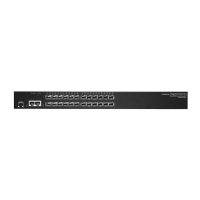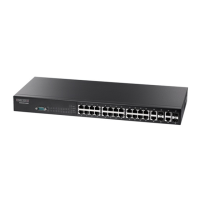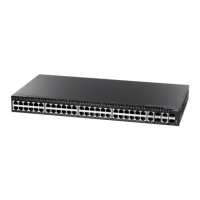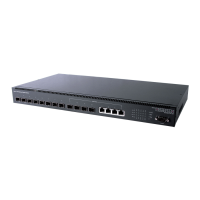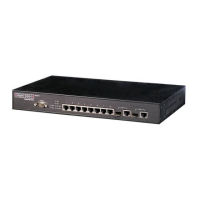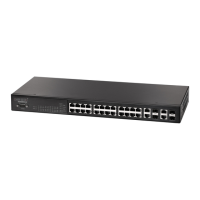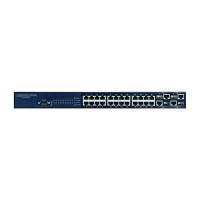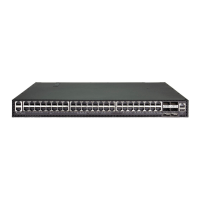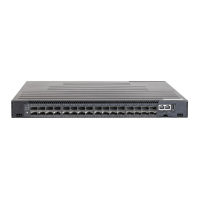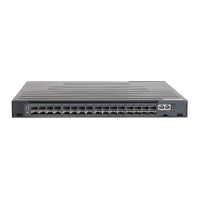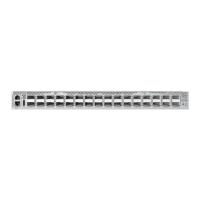Chapter 18
| Spanning Tree Commands
– 459 –
spanning-tree
port-priority
This command configures the priority for the specified interface. Use the no form to
restore the default.
Syntax
spanning-tree port-priority priority
no spanning-tree port-priority
priority - The priority for a port. (Range: 0-240, in steps of 16)
Default Setting
128
Command Mode
Interface Configuration (Ethernet, Port Channel)
Command Usage
◆ This command defines the priority for the use of a port in the Spanning Tree
Algorithm. If the path cost for all ports on a switch are the same, the port with
the highest priority (that is, lowest value) will be configured as an active link in
the spanning tree.
◆ Where more than one port is assigned the highest priority, the port with lowest
numeric identifier will be enabled.
Example
Console(config)#interface ethernet 1/5
Console(config-if)#spanning-tree port-priority 0
Related Commands
spanning-tree cost (451)
spanning-tree
root-guard
This command prevents a designated port from taking superior BPDUs into
account and allowing a new STP root port to be elected. Use the no form to disable
this feature.
Syntax
[no] spanning-tree root-guard
Default Setting
Disabled
Command Mode
Interface Configuration (Ethernet, Port Channel)
